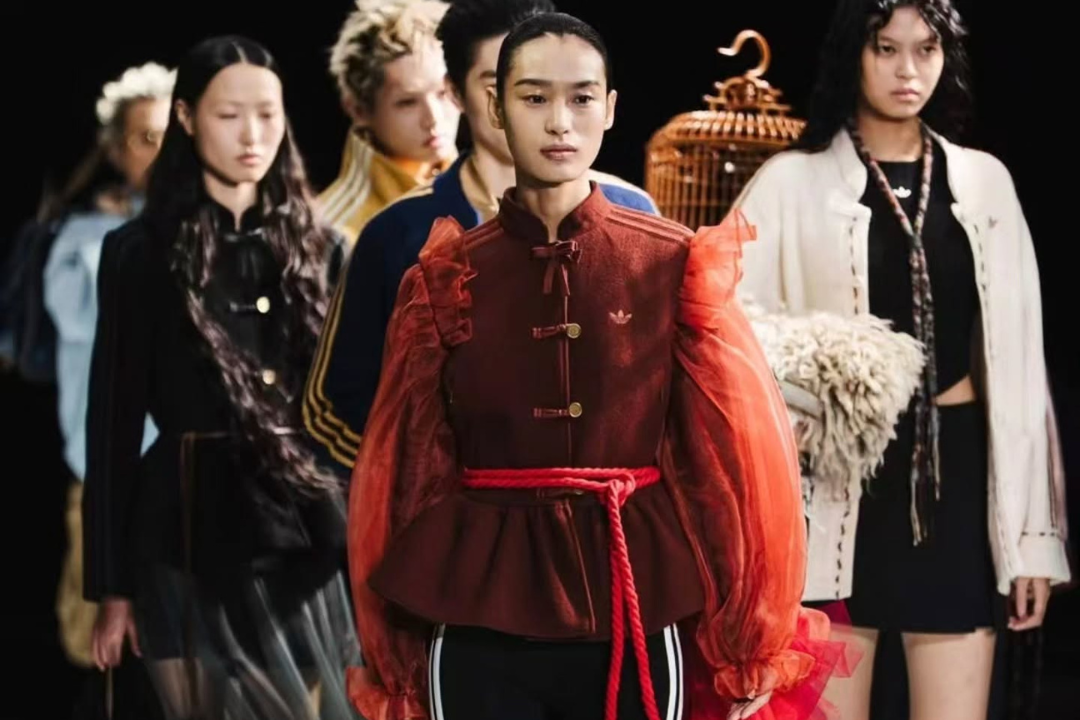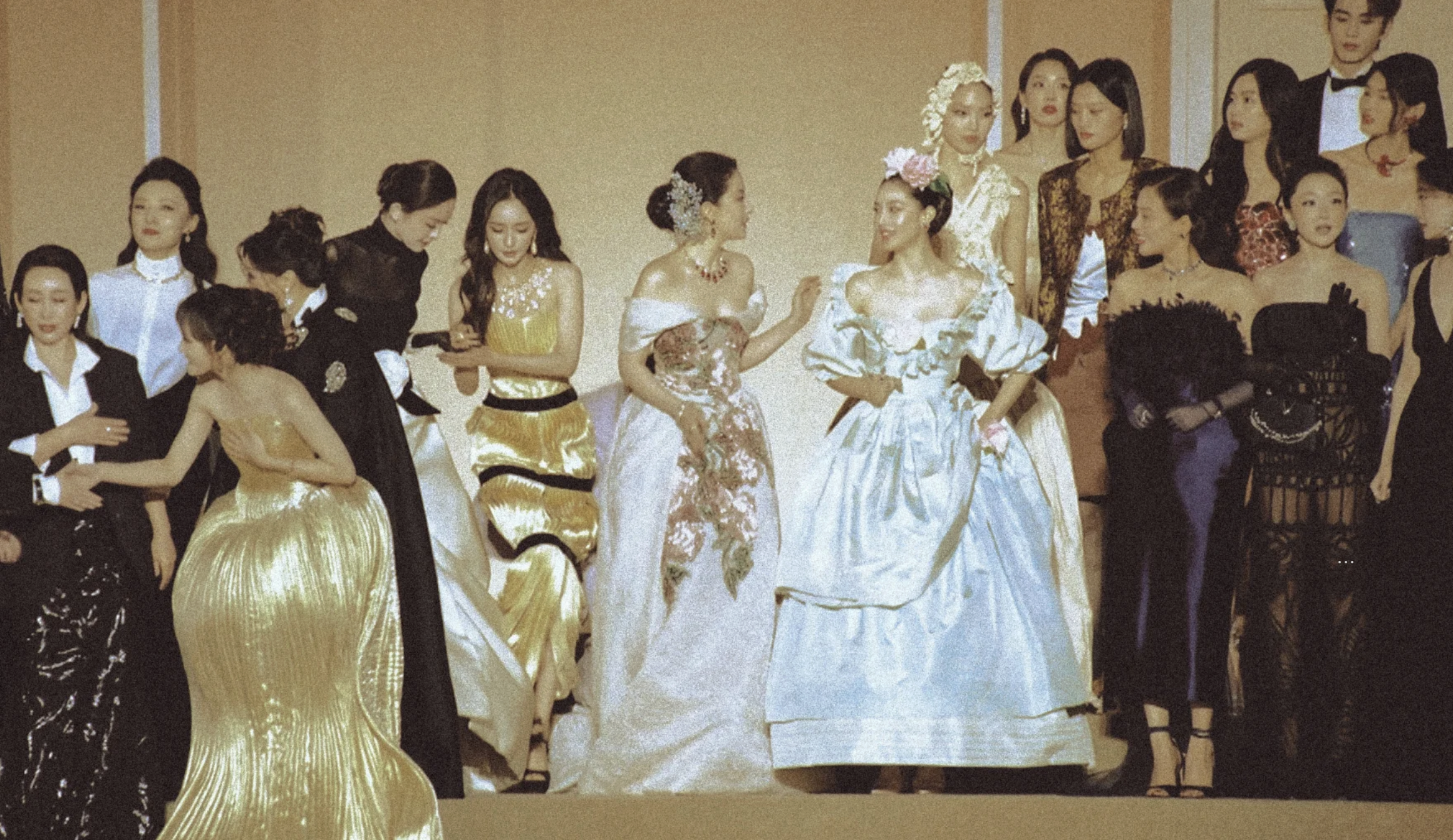Low waist jeans, mini skirts, halter tops and velour track suits — in China, the sexy, fun looks of the late ’90s and early 2000s are coming back.
Referring to 1990s and Y2K style is a way of broadly glossing over a variety of looks, from space buns and acid rave, to cyberpunk and maximalist hot pink plus rhinestones. These two tags are conveniently used to signal fashion comebacks and nostalgia, and while they can mean a wide spectrum of things, the central ideas to be celebrated are those of fun, indulgence, optimism, and more than a speck of rebellion.
In China, the 1990s and early 2000s were exciting times of globalization, when foreign media was liberally imported and broadcast on local television networks, and internet and DVD piracy was scarcely regulated. This was how many Chinese millennials grew up with the cultural knowledge of anime and MTV, as well as American high school tropes.
These days, standing out from the dominant aesthetic of the past decade of minimal chic and athleisure, are Y2K lamei (辣妹), or hot chicks. Embracing the “mean girls” attitude, hot chicks are confident from inside out, strutting in their personalized ensembles that welcome attention, blinged up for any occasion.
Related:
 China Designers: How This Label Channels Big Chinese Auntie EnergyBeijing-based fashion label MARRKNULL makes social commentary about China’s rapid developmentArticle Aug 04, 2020
China Designers: How This Label Channels Big Chinese Auntie EnergyBeijing-based fashion label MARRKNULL makes social commentary about China’s rapid developmentArticle Aug 04, 2020
In 2021, the definition of a hot chick has also been updated to reflect the times. Moving beyond stereotypes associated with this Y2K era of fashion, hot chicks now come in all shapes and colors. What’s kept of it is the sassy attitude and tip-top confidence.
Qing, who goes by Chinatown Princess on social media, is one of these dazzling hot gurlz. The 26 year-old fashion student who identifies as non-binary is studying in NYC and confesses that they grew up alongside early 2000s pop culture and music. Qing reminisces about watching Disney series and American chick flicks as a teen in China, falling in love with the fun outfits and carefree storylines. Music videos from pop icons like Christina Aguilera, Pink, Britney Spears and more were also important sources of fashion trends.
“It’s all about, like, living your best life and killing it. You look hot because you know you’re hot,” says Qing about the quintessential hot chick.
“Growing up in that era, it wasn’t a matter of taste,” Qing recalls, “it was the overwhelming mainstream aesthetic in all the media and culture people consumed.” It was only upon revisiting the movies and songs from the era again as an adult that Qing rediscovered the beauty of those outfits. “I recently thrifted a Juicy Couture tracksuit, and I can tell you the fit is so different. Even the T-shirts — T-shirts back then used a much different material and cut that just hugs your body so perfectly and makes you feel sexy.”
During the pandemic, Qing spent many isolated hours indulging in the happy memories of their teenage years. In stark contrast to the (social) media landscape today, the energetic, unserious, upbeat songs and lifestyles portrayed in that era appeared so enchanting. “It is very nostalgic for me. It is also a form of escapism — when the real world and society is far from ideal, I feel I can retreat to a safe and happy place in year two thousand.
“The fantasies told on TV at the time were often very simple, idealistic, and magical. It gives me strength and assurance.”
For Nynn Wu, who has lived in China, the United States, and is now studying fashion in Japan, inspirations were manifold. She recalls peeking at her sister’s Japanese magazines egg and fruits in elementary school, and being fascinated by quirky Harajuku street style and over-the-top Shibuya Gyaru. Wu was in love with a similar style during that circa 2007 era — feizhuliu (meaning non-mainstream), a style merging emo and Japanese visual kei aesthetic that was all the rage among teenagers.
Whether it’s feizhuliu in China, Gyaru in Japan, or McBling in the US, the love for blings, overloading accessories, and channeling cool, rebellious attitudes were similar threads that captured teenagers’ hearts globally.
A new-found connectivity with the world through television, media, and the internet sowed seeds in the hearts of young, fashion conscious Chinese kids like Wu.
“I want to understand the culture and fashion by actually immersing myself in it,” Wu says.
Delighted by the fashion she saw in seminal high-school movie Mean Girls, Wu was disappointed to find that by the time she went to the States to study, those styles were long out of fashion. “Similarly, I can hardly find any Gyaru in Shibuya today,” Wu sighs, adding that she relies on movies, music videos, and magazines from the time to dive deeper into that world.
As someone who loves fashion, Wu simply wants to experience different style cultures. “I use all three languages I know for shopping. Whether that’s on [Chinese ecommerce giant] Taobao, [UK peer-to-peer fashion marketplace] Depop, or [Japanese online shopping platform] Mercari,” Wu explains.
Related:
 The Princess Butterfly Effect: Meet the Face of “Too Cool” China“Too Cool” imagery has been blasted as “vulgar.” Princess Butterfly is anything but – and now leading brands and photographers are taking noticeArticle Jan 15, 2021
The Princess Butterfly Effect: Meet the Face of “Too Cool” China“Too Cool” imagery has been blasted as “vulgar.” Princess Butterfly is anything but – and now leading brands and photographers are taking noticeArticle Jan 15, 2021
When asked about brands she goes to for hot chick-style clothes, Wu cites i am gia, bape, and many other indie brands on Instagram or Taobao. She confesses that she prefers to achieve a unique look through styling multiple items and accessories, rather than wearing the basic look of a brand. In fact, it is precisely this invitation to self modify and personalize that is a key part of today’s hot chick style that young Chinese people love.
As Wu puts it: “Anyone can be a hot chick. You just gotta dress for yourself, think for yourself, and have that confidence.”
Cover photo courtesy of Qing
















